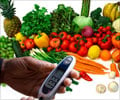- Diabetes is a chronic condition and is one of the leading causes of death around the world
- Raw food diet is eating uncooked and unprocessed plant-based foods
- Diabetes in early stages can be prevented with healthy diet, exercise, and stress management
What is Diabetes?
Go to source).
Once a person is diagnosed with diabetes it cannot be reversed but it can go into remission by certain lifestyle changes which includes daily dietary habits. There is no cure for diabetes, hence the word reversal is a misleading term and ideally should not be used.
What is Diabetes Remission?
The consensus of UK Primary Care Diabetes Society and Association of British Clinical Diabetologists lays out three criteria for remission of type 2 diabetes:- Weight loss
- Fasting plasma glucose <7 mmol/L or HbA1c <48 mmol/mol (WHO diagnostic thresholds) on two occasions separated by at least six months
- Attainment of these glycaemic parameters after complete cessation of all glucose lowering therapies
How Raw Food Helps With Diabetes Remission?
Lifestyle changes in diabetes should include the practice of eating foods that are uncooked or unprocessed and mostly should be plant-based. The diet helps in decreasing the intake of fat and losing weight however it lacks all the required nutrients.Raw food diet has been advocated since the time of Pythagoreans or even before as it can benefit both healthy individuals and those with chronic disease like diabetes (2✔ ✔Trusted Source
Nutritional basis of type 2 diabetes remission
Go to source). Studies suggest that diabetes can be controlled by making certain lifestyle changes like eating habits losing weight and regular exercises.
For weight loss there needs to be a major calorie restriction. This leads to a rapid fall in liver fat, normalisation of liver insulin sensitivity and this leads to a better control of diabetes.
Uncooked versus Cooked Food Which is Healthy?
Raw vegan food is uncooked food without any animal products, dairy, or eggs and has gained popularity due to its many benefits.Cooking will generally destroy nutrients and enzymes, alters the structure and, thus, digestibility of food. It also creates by-products that may be harmful.
For example, when we cook vegetables, it decreases water-soluble and heat sensitive nutrients, such as the carotenoids or the pigments that are full of anti-oxidants (3✔ ✔Trusted Source
Carotenoids and total phenolic contents in plant foods commonly consumed in Korea
Go to source). The insoluble fiber in vegetables too decreases as a result of cooking (4✔ ✔Trusted Source
Dietary fiber of commonly fresh and cooked vegetables consumed in India
Go to source).
If the foods is rich in carbohydrates and proteins heating initiates a reaction called the ‘Maillard reaction'. This reaction destroys many essential amino acids in the protein and causes them to cross-link with carbohydrates, making the food harder to digest (5✔ ✔Trusted Source
Nutritional and toxicological aspects of the Maillard browning reaction in foods
Go to source), It also results in formation of pro-inflammatory products such as AGE or advanced glycation end-products which can result in chronic disease (6✔ ✔Trusted Source
Diet-Derived Advanced Glycation End Products Are Major Contributors to the Body's Age Pool and Induce Inflammation in Healthy Subjects
Go to source). When proteins are heated it can form compounds that can be cancerous (7✔ ✔Trusted Source
Influence of processing on protein quality
Go to source).
Cooking has its own advantages too. By heating vegetables, the microbes are killed and though the carotenoids or pigments decrease but it increases the bioavailability of certain carotenoids (8✔ ✔Trusted Source
Thermal processing enhances the nutritional value of tomatoes by increasing total antioxidant activity.
Go to source,9✔ ✔Trusted Source
Bioavailability of beta-carotene is lower in raw than in processed carrots and spinach in women
Go to source). Cooking may help decrease the level of pesticides in or on vegetables, (10✔ ✔Trusted Source
Effect of household preparation on levels of pesticide residues in produce
Go to source). Cooking helps inactivate certain substances that inhibit effectiveness of pancreatic enzymes in legumes such as beans, soybeans, peas, chickpeas, peanuts and lentils.
Which is the Best Diet for Diabetes?
There is a unanimous consensus that the elements of a whole-food plant-based diet—legumes, whole grains, fruits, vegetables, and nuts, with limited or no intake of refined foods and animal products—are highly advantageous for remission and treatment of type 2 diabetes. Equally important, plant-based diets address the bigger picture for patients with diabetes by simultaneously treating cardiovascular disease and its risk factors such as obesity, hypertension and inflammation (11✔ ✔Trusted SourceIs concordance with World Cancer Research Fund/American Institute for Cancer Research guidelines for cancer prevention related to subsequent risk of cancer? Results from the EPIC study
Go to source).
Plant-based eating also carry significant environmental benefits. The World Health Organization and the United Nations have advocated diets higher in plant foods as not only effective for diabetes and obesity, but also more environmentally sustainable than diets abundant in animal products (12✔ ✔Trusted Source
Vitamin and mineral requirements in human nutrition
Go to source). While there is more research which needs to be done but there is enough evidence to substantiate that plant-based diets do help prevent diabetes and other chronic illnesses.
Reference:
- What is Diabetes? - (https://www.niddk.nih.gov/health-information/diabetes/overview/what-is-diabetes)
- Nutritional basis of type 2 diabetes remission - (https://www.bmj.com/content/374/bmj.n1449)
- Carotenoids and total phenolic contents in plant foods commonly consumed in Korea - (https://www.koreamed.org/SearchBasic.php?RID=2313632)
- Dietary fiber of commonly fresh and cooked vegetables consumed in India - (https://www.researchgate.net/publication/12294851_Dietary_fiber_of_commonly_fresh_and_cooked_vegetables_consumed_in_India)
- Nutritional and toxicological aspects of the Maillard browning reaction in foods - (https://www.tandfonline.com/doi/abs/10.1080/10408398909527499)
- Diet-Derived Advanced Glycation End Products Are Major Contributors to the Body's Age Pool and Induce Inflammation in Healthy Subjects - (https://pubmed.ncbi.nlm.nih.gov/16037267/)
- Influence of processing on protein quality - (https://pubmed.ncbi.nlm.nih.gov/2081988/)
- Thermal processing enhances the nutritional value of tomatoes by increasing total antioxidant activity. - (https://europepmc.org/article/med/11982434)
- Bioavailability of beta-carotene is lower in raw than in processed carrots and spinach in women - (https://pubmed.ncbi.nlm.nih.gov/9567003/)
- Effect of household preparation on levels of pesticide residues in produce - (https://pubmed.ncbi.nlm.nih.gov/8946722/)
- Is concordance with World Cancer Research Fund/American Institute for Cancer Research guidelines for cancer prevention related to subsequent risk of cancer? Results from the EPIC study - (https://pubmed.ncbi.nlm.nih.gov/22592101/)
- Vitamin and mineral requirements in human nutrition - (https://www.fao.org/ag/humannutrition/36659-04427f866c8b2539d8e47d408cad5f3f9.pdf)
Source-Medindia















